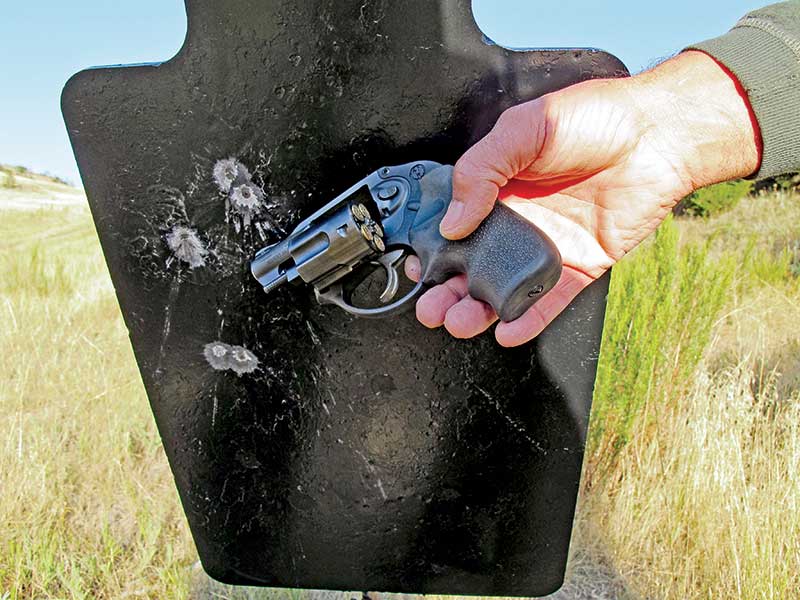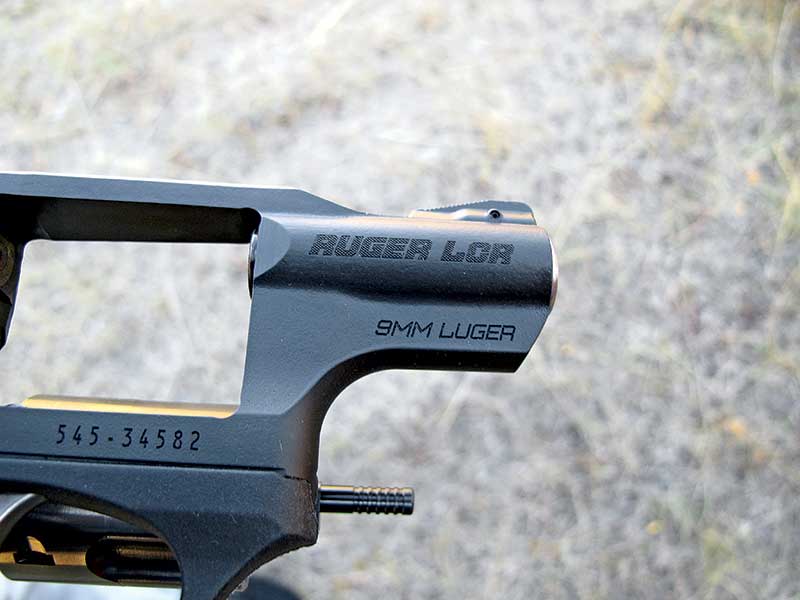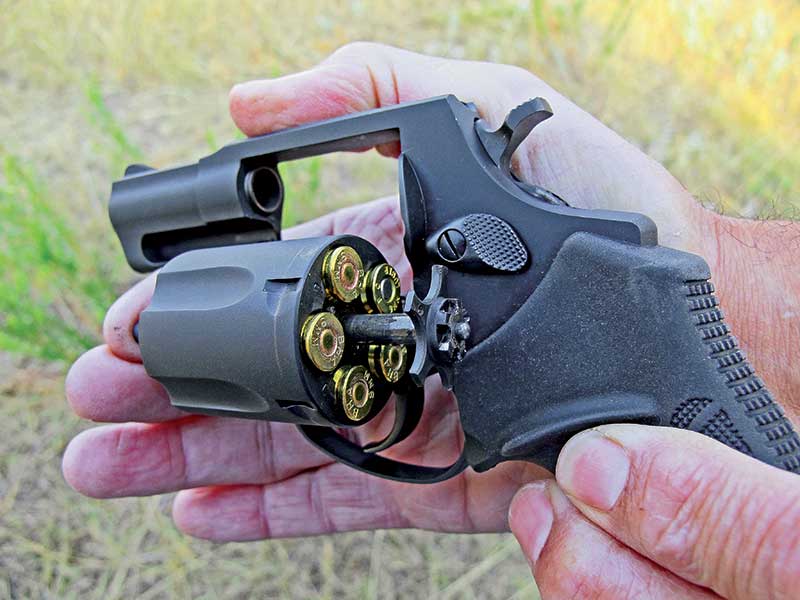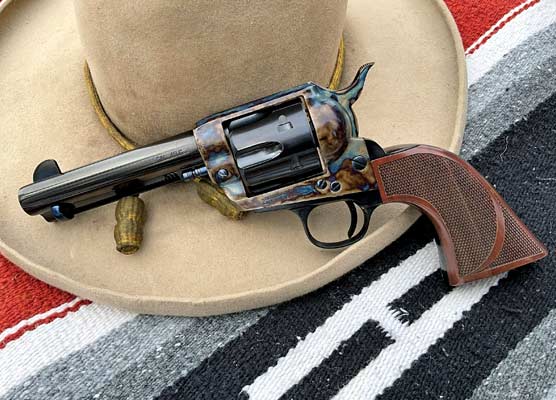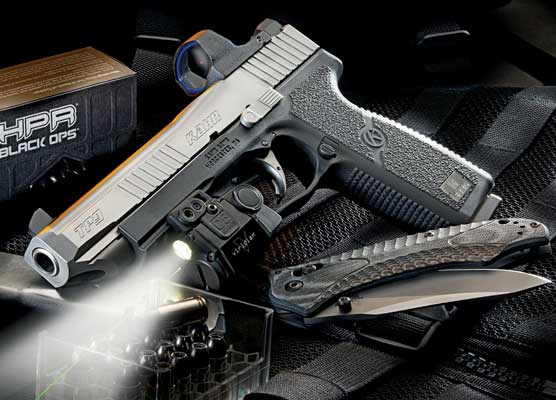9mm Revolvers
A Viable Alternative To The .38 Special?
As I was packing up three 9mm revolvers to head down to my shooting range, a visiting friend asked, “Why would anyone want a revolver in 9mm?” I replied, “Well, because …” And then I stopped because I couldn’t think of a reason why anyone would want a 9mm revolver either.
My first memory of 9mm revolvers goes back nearly 50 years. That was when Ruger began selling “convertibles.” Those were .357 Magnum Blackhawks with an extra cylinder for 9mm Parabellum. Although I’ve owned many Ruger .357 Magnum Blackhawks since buying my first in 1968, I’ve never had a “convertible” one until the company loaned me this one specifically for this article.
In other more vague memories I remember some double-action 9mms being made, so when planning this article I dug up information showing both Taurus and Ruger were making double action self-defense type 9mms. Both had 2″ barrels and both are included here.
The Guns
Ruger’s 9mm revolver is their well-received LCR. It’s double action only with a 1.87″ barrel and Hogue “Tamer” rubber grips. Its weight is a mere 17.2 ounces. Finish is matte black “synergistic” hard coat. I understand matte black but I’m not sure what synergistic is although my computer’s spell check recognizes it. Sights are a groove down the frame’s topstrap but the front sight is a small blade that can be changed. That requires driving out a pin and then a higher or shorter sight blade as needed, can be installed. Cylinder capacity is five rounds and of course with the 9mm Luger headspacing on the case mouth and case head design being rimless, some sort of “clips” are necessary to hold 9mms. We’ll return to those shortly.
The Taurus 9mm revolver is their Model 85RB. Its barrel length is rated at 2″ but its weight is 23.6 ounces. Finish is simple matte blue. Likewise to the Ruger LCR, grips are rubber, cylinder capacity is five rounds and sights are a grooved topstrap for rear. Unlike the Ruger the front sight is permanent, and trigger action is conventional single and double action.
Now to this factor of clips. To the best of my knowledge these originated with some bright light at Smith & Wesson when adapting their N-Frame Hand Ejector, 2nd Model revolver to fire the .45 ACP, rimless cartridge. Smith & Wesson and Colt both made US Model 1917 .45 ACP revolvers for the US Government during World War I. Then both companies continued offering the same basic models commercially for decades.
Those original clips were called “half-moon” and held three rounds each. Since that time “full-moon” clips have become common holding 6-rounds of .45 ACP. Along the way I can recall Smith & Wesson revolvers chambered for both 10mm and .40 S&W, but recall no details on clips for them.
Regardless, these Taurus and Ruger 9mm revolvers do require clips if you want simultaneous extraction of the fired cases. Ruger calls theirs “moon clips” and Taurus has coined the name “stellar clips” for theirs. I wondered if they would be interchangeable but they are not.
The 9mm cases popped into and out of these clips much easier than any full or half-moon .45 clips of my experience. I found the case removal chore expedited by holding the clip in one hand and inserting a screwdriver into the empty case. They popped right out with little effort.
The chambers will hold 9mm rounds just fine, headspacing on the case mouth. While the extractor will not push them out once fired, they can be pushed out with a small rod from the front if necessary. I sure wouldn’t want to do it that way in a self-defense situation.
SA Ruger
Of course the single-action Ruger New Model Blackhawk needs no clips and can’t use them anyway. Its ejector rod aside the barrel pops empties right out. The Blackhawk is a big handgun though. Barrel length is 6.5″, grips are hard rubber, rear sight is fully adjustable and front sight is a ramp type. Weight is a hefty 45 ounces. My sample was blued steel and had an anodized aluminum grip frame and ejector rod housing.
One has to wonder about the barrel cylinder gap of 9mm revolvers affecting velocities. So I did a couple of little tests. My shortest barreled semi-auto 9mm is a S&W Model 39. Its barrel length is 4″. Of course pistol barrel lengths include the chamber but revolver barrel lengths do not. With Black Hills 115-grain FMJ factory loads my Model 39 gave 1,203 fps, the Taurus gave 1,133 fps, the Ruger LCR gave 1,125 fps and the big 6.5″ Blackhawk gave 1,322 fps. There perhaps is a bit of velocity loss with the barrel cylinder gap but it appears barrel length is a more important factor.
As a little aside here I can give a warning which will perhaps help other 9mm revolver shooters. I have some European military surplus 9mm ammunition headstamped VPT61. I bought it as Czech-made but a knowledgeable friend says it’s Finnish-made. Regardless, it functioned fine out of my Model 39 semi-auto and ejected perfectly from the Blackhawk. But brothers, don’t fire that stuff in these little revolvers! It was hot enough I had to tap the ejector rods of both rather smartly with a wooden stick to pop the empty cases out.
Some Shooting
Here’s another item I checked based on previous experience. Semi-autos chambered for 9mm Luger are notoriously poor cast bullet shooters in general. Some will merely send lead alloy bullets tumbling downrange. Even cast of Linotype alloy, which is about the hardest ever recommended for home casting and sized as large as most 9mm chambers will accept, alloy group sizes are usually mediocre to awful.
Ruger recommends only jacketed bullets in their LCR 9mm. Taurus made no mention about the matter. However, that Ruger .357 Magnum barrel certainly has no stipulations about not shooting lead alloy bullets. Therefore, I shot 9mm hand-loads using Lyman design #356242, 120-
grain RN in it along with some Powder River 9mm lead alloy factory loads. Accuracy from the Blackhawk with 9mm lead alloy bullets was about on a par with what I got with 115 FMJ factory loads by Black Hills and Federal American Eagle. All groups ran from about 2.5″ to 3.5″ at 25 yards from sandbag rest.
What about Taurus and Ruger groups? I didn’t fire any at 25 yards. It seems to me ridiculous to test fire a self-defense, 2″-barreled revolver at 25 yards or from a sandbag rest. So I shot them as they would be used in reality — two handed, standing and double action from about 10 paces. The target was an ordinary Action Target’s PT-Torso. Note in the photos both were about right on for elevation but I shot the Ruger to the left a bit and the Taurus to the right a little.
And so at the end, can I answer my friend’s question any better. “Why would anyone want a 9mm revolver?” Well, they might because, well, because they are there just like what that fellow said about the big mountain.
Because they’re there.
And, if you normally run 9mm autos but have a hankering for a small revolver, it does make the ammo situation handier than going with another caliber, and ballistics are about on-par with a good .38 load.


